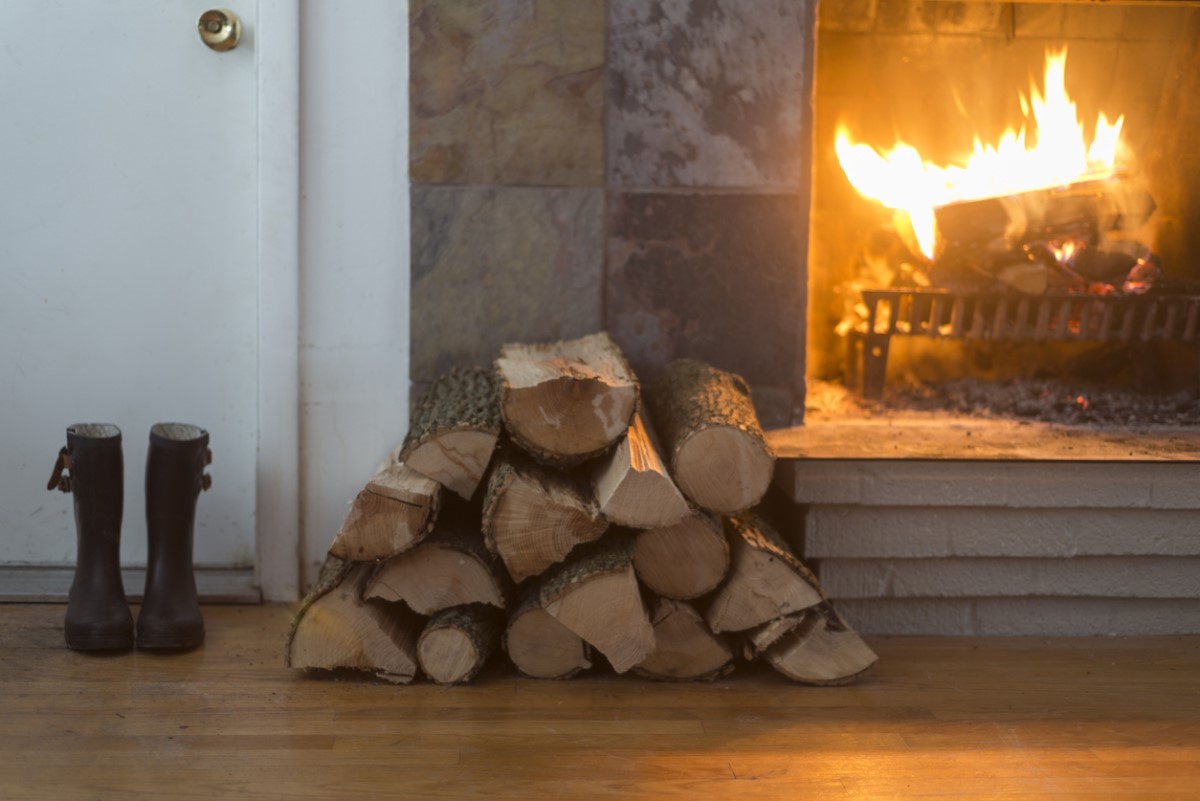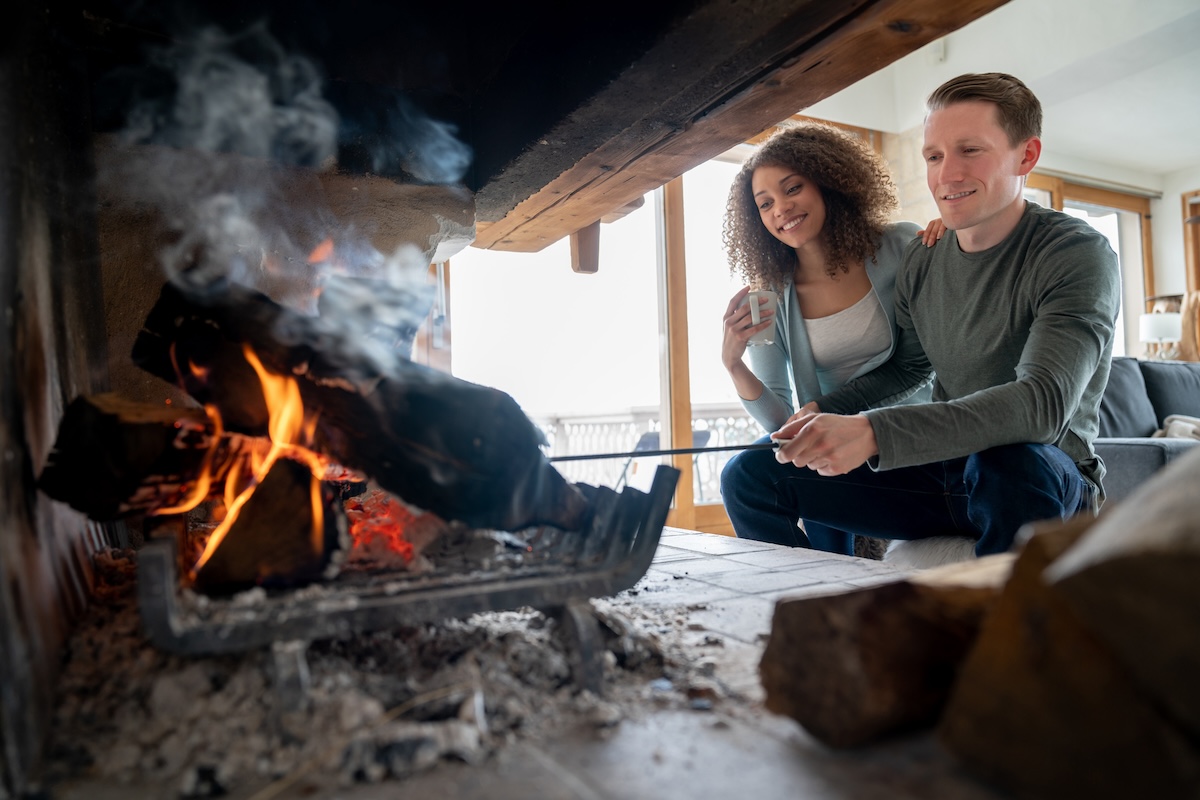

We may earn revenue from the products available on this page and participate in affiliate programs. Learn More ›
A fireplace should create warmth and ambiance, not fill your living room with smoke. When smoke enters the home instead of venting up the chimney, it’s usually a sign of a problem with airflow or an underlying issue in the fireplace or chimney system.
And it’s not just unpleasant—fireplace smoke can damage your home and pose health risks, including exposure to carbon monoxide. The good news is that most smoky fireplace problems have straightforward causes and solutions. Below, we’ll cover the most common reasons smoke escapes into your home and what you can do to fix them.
Is Fireplace Smoke Dangerous?

Yes, fireplace smoke in the house is dangerous. Even a small amount of smoke contains fine particles that can irritate your eyes, nose, and lungs, especially so in children, older adults, or anyone with asthma or other respiratory issues. More concerning, smoke also can carry carbon monoxide, an odorless gas that can cause headaches, dizziness, or even life-threatening poisoning at high levels.
Beyond health risks, smoke can damage the home: It can discolor walls, ceilings, and furniture, and contribute to creosote buildup inside the chimney, which increases the risk of a chimney fire. That’s why it’s important to identify and resolve smoky fireplace problems quickly.
Reasons for Fireplace Smoke in Your House

Even if you know how to use a fireplace, sometimes a well-built one can still send smoke into your living room. Here are the most common reasons this happens, and what you can do about each one.
The damper is closed.
If your damper isn’t fully open, smoke has nowhere to go but inside. Always check that it’s completely open before lighting a fire in a fireplace or wood-burning stove.
There’s little or no difference between the temperature indoors and out.
A strong chimney draft depends on a temperature contrast. If it’s nearly the same temperature indoors and outdoors, hot air won’t rise properly. Only light fires when it’s at least 20 degrees cooler outside, and pre-warm a cold flue by burning a rolled-up newspaper close to the flue.
Water is seeping into the flue.
Rain or snow in an uncovered chimney can cool the flue and weaken the draft. If smoke appears after storms, you might need a chimney cap. This simple add-on also blocks animals and debris.
The flue is blocked.
Leaves, bird nests, or creosote buildup can obstruct the flue and push smoke back inside. A chimney sweep certified by the Chimney Safety Institute of America (CSIA) can inspect and safely clear any blockages, reducing fire risk in a smoky chimney and improving airflow.
Your fireplace isn’t properly vented.
In tightly sealed homes, negative air pressure can push smoke down instead of letting it rise. Try opening a nearby window. If that helps, consider installing an outside air supply vent at the back of the firebox to balance the pressure.
Your chimney or fireplace has structural issues.
Sometimes the problem is structural: a chimney that’s too short, a flue that’s undersized, or a firebox opening that’s too tall. Instead of completing major reconstruction, installing a fireplace smoke guard can help reduce smoke escaping into the room.
How to Prevent Fireplace Smoke

Stave off a smoky fireplace the next time you light a fire by following these fireplace and chimney maintenance tips:
Use the right fuel and tinder.
Burn only well-seasoned hardwood or CSIA-approved logs for fuel, with dried twigs or branches as kindling and newspaper or pinecones as tinder. Avoid unseasoned firewood, cardboard, or treated wood, which generate excess smoke.
Employ a proper fire-building method.
Building a fire using the top-down burn method (large logs on the bottom, layers of kindling above, tinder on top) creates a hotter, faster-burning fire with less smoke.
Perform regular maintenance.
Keep the firebox clear by removing ashes once they’re cool, leaving the grate centered with a few inches of clearance on all sides. These small steps help your fireplace burn cleanly and efficiently.
Schedule annual chimney inspections.
Have a CSIA-certified chimney sweep inspect your chimney at least once a year. Regular professional maintenance clears creosote, removes blockages, and catches structural problems early.
Consider fireplace or chimney modifications, if needed.
In some cases, persistent smoke problems may require adjustments to your home’s setup. Adding an outside air vent, installing a chimney cap, or fitting fireplace doors or a smoke guard can all help improve airflow and reduce smoke indoors.
FAQ
Yes. Fireplace smoke contains fine particles and gases, including carbon monoxide, which can irritate your lungs and pose serious health risks if inhaled indoors.
Make sure the damper is open, the flue is warm, and the chimney is clear of blockages. In some homes, installing an outside air vent can also help.
Avoid running ceiling or exhaust fans near the fireplace, since they can disrupt airflow and pull smoke into the room instead of up the chimney.
Yes. Cracking a nearby window can improve airflow and help balance indoor and outdoor air pressure, reducing the chance of smoke entering your home.
